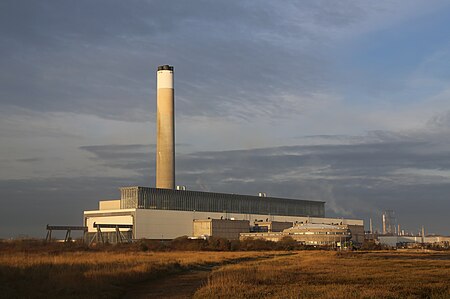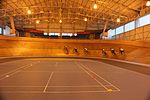Fawley Power Station
1971 establishments in England2013 disestablishments in EnglandBuildings and structures demolished in 2019Buildings and structures demolished in 2020Buildings and structures demolished in 2021 ... and 10 more
Buildings and structures demolished in 2023Buildings and structures in HampshireDemolished buildings and structures in HampshireDemolished power stations in the United KingdomEnergy infrastructure completed in 1969Former oil-fired power stationsFormer power stations in EnglandPages with disabled graphsPower stations in South East EnglandThe Twentieth Century Society Risk List

Fawley Power Station was an oil-fired power station located on the western side of Southampton Water, between the villages of Fawley and Calshot in Hampshire, England. Its 198-metre (650 ft) chimney was a prominent (and navigationally useful) landmark, but it was not, as is sometimes claimed, the highest point in Hampshire (which is Pilot Hill).
Excerpt from the Wikipedia article Fawley Power Station (License: CC BY-SA 3.0, Authors, Images).Fawley Power Station
Western Road, New Forest Fawley
Geographical coordinates (GPS) Address Nearby Places Show on map
Geographical coordinates (GPS)
| Latitude | Longitude |
|---|---|
| N 50.816696 ° | E -1.328881 ° |
Address
Western Road
Western Road
SO45 1BD New Forest, Fawley
England, United Kingdom
Open on Google Maps










